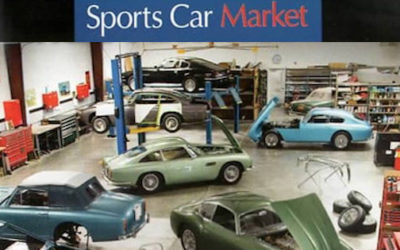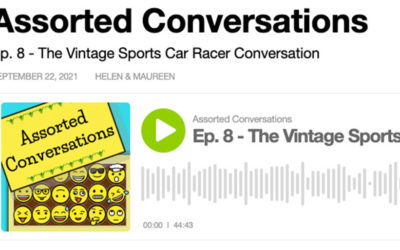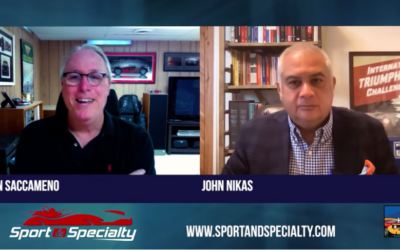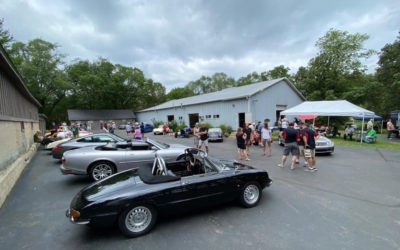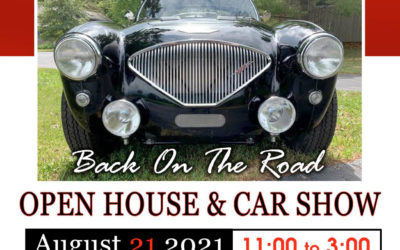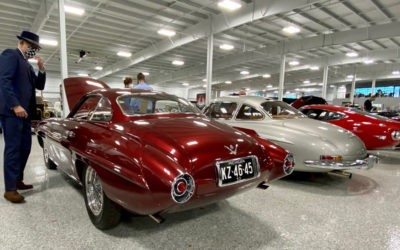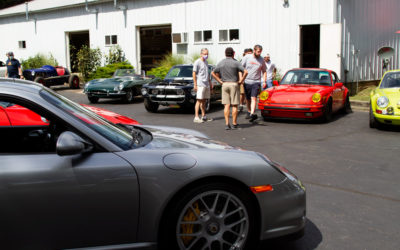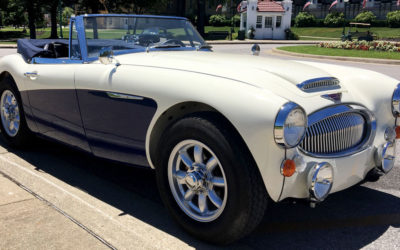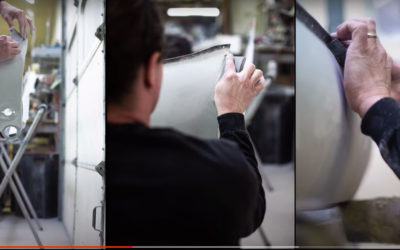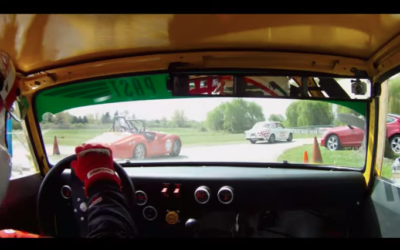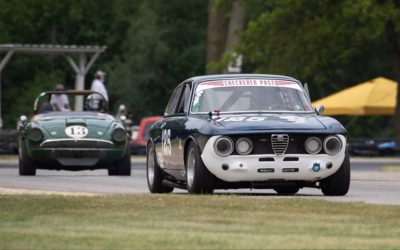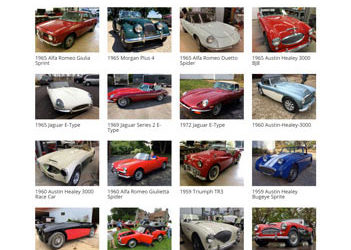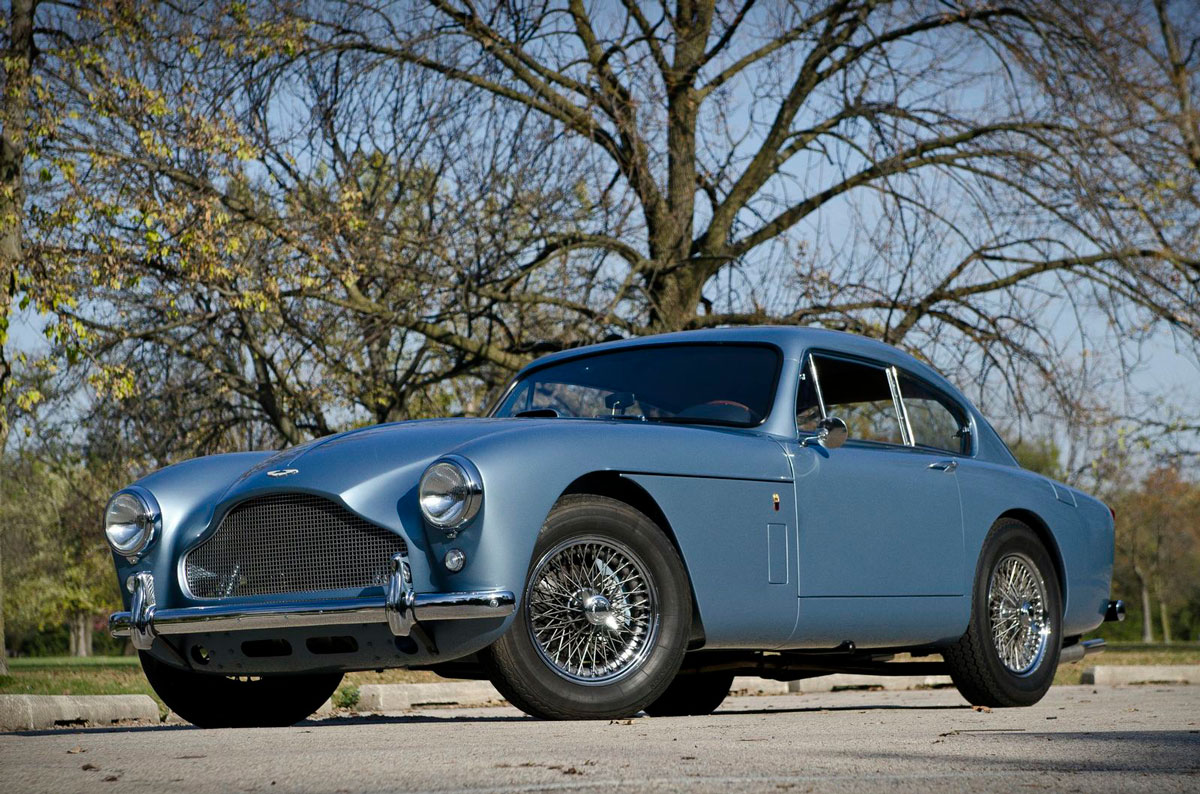
Guest Blog: Peter Conover’s Road to Restorations
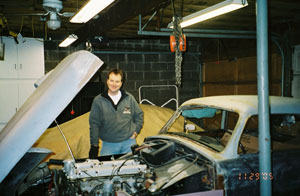 I first became interested in the restoration British cars about 20 years ago when an acquaintance agreed to sell me his long-dormant Triumph TR-6. For that learning experience I did a basic mechanical and cosmetic restoration. It wasn’t a “ground up” restoration, but I learned what was involved. For my subsequent restoration, an Austin Healey 3000, I did do a complete restoration. It was the first time that I ever purchased a car and worked on it for years before I ever had the chance to drive it. It was during the Healey restoration that I met Mark Baker at Sport & Specialty in Durand, IL. Mark and I developed a professional/friendship relationship wherein he allowed me to do as much work on the project as I was able. This not only saved me some labor costs, but more importantly, contributed to my connection with the car.
I first became interested in the restoration British cars about 20 years ago when an acquaintance agreed to sell me his long-dormant Triumph TR-6. For that learning experience I did a basic mechanical and cosmetic restoration. It wasn’t a “ground up” restoration, but I learned what was involved. For my subsequent restoration, an Austin Healey 3000, I did do a complete restoration. It was the first time that I ever purchased a car and worked on it for years before I ever had the chance to drive it. It was during the Healey restoration that I met Mark Baker at Sport & Specialty in Durand, IL. Mark and I developed a professional/friendship relationship wherein he allowed me to do as much work on the project as I was able. This not only saved me some labor costs, but more importantly, contributed to my connection with the car.
Before my Healey project was complete, I was already looking for my next project. An exhibit of James Bond cars at the National Motor Museum in Beaulieu introduced the notion of an Aston Martin. Research revealed that the prices of these cars were in a whole different league than what I had experienced so far, but confident of my ability to restore an affordable rough example, I set about trying to locate a suitable candidate. In October 2005 I tried to acquire a DB MkIII drophead that was up for auction in the U.K., but was quickly outbid past my limit. However, later that fall, 3 different coupes amazingly came available within a few weeks. The first was in California, the second in Italy, and a third one in Ohio.
As the one in Ohio was most promising, as well as most accessible from Chicago, I went to see it and bought it on the spot. The car had been originally dispatched in January 1958 to a dealership in Los Angeles and evidently spent most of its early years in California. It had been last titled in California in 1992 to an individual residing in Newport Beach. Apparently, sometime after an accident, repair/restoration work was begun, but before the job was completed, the car was sold to someone in Ohio. That buyer held onto the car for over 12 years, without doing any further work on the car, until he decided to sell it in 2005. Although I was able to contact the Ohio owner, I was unsuccessful in my attempt to reach the former owner in California.
After bringing the car to Illinois, I soon realized how much of it was missing. Although I had known that it had no interior (the seats were missing completely) and it had been hit in the rear, it was only through further research that I found out just how much was not there – nothing that couldn’t be replaced, but as there isn’t too much documentation, it would be difficult for me to know exactly how these cars were put together. The more I got into it, the more I felt I needed something to model the pieces on.
Feeling a bit of buyer’s remorse and thinking I might have been better off with one of the other cars, it was suggested to me by Kevin Kay, the Feltham Aston restoration specialist who had been advising me, that I get the California car that I had been considering earlier in addition to the one I already had. After the initial shock of this idea wore off, what he had to say made sense: “First, you could use an unmolested example to build your car by. Second, the MkIII is a rare and sought-after car, and you could sell it when you were done for good money.” As it was still available, we snatched it up. As it turned out, the two cars were very similar: In addition to both being early MkIIIs (with the small taillights), according to the factory build sheets they were both originally Black cars with Red interiors. The big difference was that one now had no interior but intact mechanicals, while the other had a complete (albeit shoddy) interior and the mechanicals apart.
Mark Baker thought it was a great idea. He felt having two cars next to each other would answer a lot of questions that would arise during restoration. The two cars were brought together at Mark’s shop in April 2006: AM300/3/1380 completely dismantled, with body work proceeding, while AM300/3/1391 stood proudly to the side. Many people asked me if I was going to make one car out of the two. Not only did I feel that would be a disservice to this rare model, but I was counting on the proceeds from the sale of the second car to offset some of my expenses on the first. As it turned out, I was made an “offer I couldn’t refuse” on the second car, and sold it before I was completely finished with it.
As the years stretched on, I was dumbfounded on how long the restoration was taking and how expensive it was turning out to be. But having thrown myself 100% into the endeavor, I was determined to see it through. Finally, in July 2011, I brought it home in time to drive it to Elkhart Lake where it made its debut at the Road and Track Concours.
Read More of My Blog Posts
What is the Digital Path Forward?
There’s a genuine satisfaction in being asked your opinion on a professional topic. It usually means that your opinion carries some weight as an expert. When the request is from Keith Martin’s Sports Car Market, it’s particularly satisfying. I was asked to join a...
Podcasting with “Assorted Conversations”
I added podcasting to my portfolio of interviews lately, and it was a great time. My friends Helen and Maureen explore people’s pursuit of their passions through their podcast “Assorted Conversations”. These conversations are with individuals who have found that...
SCM Buy Sell Hold Spotlight with John Saccameno
I had the pleasure of being interviewed by Sports car Market Magazine's John Nikas about the history of Sport and Specialty and how we all ended up here. It was a fun little piece, and very well put together. Listen in and let me know what you think. -John Read More...
Pictures and Thanks from Open House 2021!
I want to take a moment to thank everyone who took the time to drive out and join us Saturday at our Third Annual Sport and Specialty Open House. To those of you who struggled with previous commitments, rest assured we’ll be here again next year. It may have taken...
Sport and Specialty Open House 2021!
Reserve Saturday August 21 for the third annual Sport and Specialty Open House and Car Show. Bring any marque, model, or year of car, but get there. Daily drivers welcome! Bring a friend, take a drive, and see what we’re working on and finishing up. We expect many of...
Sotheby’s Records $44.4M for Private Car Collection
Last year my Alfa racing partner John Wheeler called me to ask some questions about how collector car auctions worked, as he knew I followed them and have attended quite a few around the country. He and the firm he works for were hired to develop strategies to pay...
Fuelfed’s Shop Visit on a Fine Summer Day
Well, if variety is the spice of life, Saturday’s Fuelfed stop at Sport and Specialty for lunch was a real home run. Brian and Lorraine Hughes asked if I would entertain having their tour stop in for lunch on Saturday. I couldn’t say yes fast enough. As a new sponsor,...
The Restorer’s Healey – John’s 1967 BJ8
Regular followers know that the white-over-blue 1967 Austin Healey BJ8 that shows up on social media is one of my favorite cars. I purchased the car from my customer and friend Tony Grau and his family as an uncompleted project. We had previously assembled and painted...
Your Virtual Tour Guide
For some reason, I just love giving tours of Sport and Specialty. I gave many plant and home office tours during my years in corporate sales, but touring plants, warehouses and administrative offices just wasn’t as much fun as showing people how you blow up cars and...
It Drives Like an Alfa
I met my racing and paddock partner John Wheeler almost twenty years ago when I first started Vintage Historic racing. I was trying to figure this whole thing out and he was my coach and mentor. The most important thing he ever told me when I bemoaned my slow times...
We’re Racing Again! The 2020 VSCDA Blackhawk Classic
Last week, Cyndi Paceley of Vintage Motorsport magazine reached out to me for my impressions about upcoming the VSCDA Blackhawk Challenge. She was interested (after the racing concluded) to see how I felt the event went overall, and also specifically how the current...
More Cars, More Pages, More Videos, and More Fun
As "the web guy," part of the fun is seeing the progress of the cars in the shop, even when I'm not there. While it's great making pictures at the shop - and hanging out with the guys - to see updated images of projects is truly fascinating. What was a...
